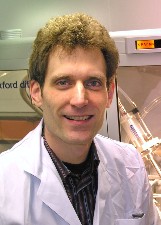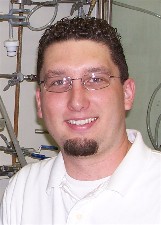Org. Synth. 2008, 85, 196
DOI: 10.15227/orgsyn.085.0196
SYNTHESIS OF 2-SUBSTITUTED BIARYLS VIA Cu/Pd-CATALYZED DECARBOXYLATIVE CROSS-COUPLING OF 2-SUBSTITUTED POTASSIUM BENZOATES: 4-METHYL-2'-NITROBIPHENYL AND 2-ACETYL-4'-METHYLBIPHENYL
[Biphenyl, 4-Methyl-2'-nitro-]
[Biphenyl, 4-Methyl-2'-acetyl-]
Submitted by Lukas J. Gooßen
1, Nuria Rodríguez, Christophe Linder, Bettina Zimmermann, and Thomas Knauber.
Checked by Scott E. Denmark and Nathan S. Werner.
1. Procedure
DOI: 10.15227/orgsyn.085.0196
Method A. 2-Nitrobenzoic acid derivatives.
A. Potassium 2-nitrobenzoate. A 1-L, two-necked, round-bottomed flask equipped with a magnetic stirring bar and a 250-mL dropping funnel is charged with 2-nitrobenzoic acid (33.4 g, 200 mmol) (Note 1) and 200 mL of ethanol (Note 2). To this solution is added a solution of potassium hydroxide (85%) (13.2 g, 200 mmol, 1.00 equiv) (Note 3) in 200 mL of ethanol dropwise over 2 h. After complete addition, the reaction mixture is stirred for another 1 h at room temperature. A gradual formation of a white precipitate is observed. The resulting solid is collected by filtration through an 10-cm Büchner funnel (fitted with Whatman-1 filter paper, 90 mm), washed sequentially with ethanol, 2 × 50 mL, and 50 mL of cold (0 °C) diethyl ether, transferred to a 500 mL round-bottomed flask, and dried at 1.0 mmHg to provide potassium 2-nitrobenzoate (35.3 g, 86%) as a white powder (Note 4).
B. 4-Methyl-2'-nitrobiphenyl. An oven-dried 500-mL, three-necked, round-bottomed flask equipped with a magnetic stirring bar, an internal thermometer and a reflux condenser fitted with a nitrogen gas inlet (Note 5), is charged with potassium 2-nitrobenzoate (22.6 g, 110 mmol, 1.10 equiv) (Note 6), (1,10-phenanthroline)bis(triphenylphosphine)copper(I) nitrate (1.25 g, 1.50 mmol, 0.015 equiv) (Note 7) and palladium acetylacetonate (45.7 mg, 0.15 mmol, 0.0015 equiv) (Note 8). After deoxygenating the flask with three alternating vacuum and nitrogen purge cycles, a solution of 4-bromotoluene (12.3 mL, 100 mmol) (Note 9) in 150 mL of anhydrous mesitylene (Note 10) is added. The flask is lowered into an oil bath preheated to 175 °C, so that the internal temperature remains constant at 150 °C (Note 11). After the reaction mixture is stirred and heated for 16 h, an aliquot checked by GC analysis indicates that the reaction is complete (Note 12). The heat source is removed and the mixture is allowed to stir for 2 h further while cooling to room temperature (Note 13). The nitrogen source is removed and any condensate is washed from the condenser into the reaction mixture with 10 mL of ethyl acetate. The mixture is then suction filtered through a 6-cm fritted glass funnel (coarse) containing a 1 cm bed of dry Celite (Note 14) into a 500-mL round-bottomed flask. The filter cake is rinsed with ethyl acetate, 3 × 20 mL (Note 15). The resulting dark brown filtrate and the washes are concentrated under reduced pressure (23 °C, 20 mmHg). The residue is purified by Kugelrohr distillation at 1.0 mmHg, gradually increasing the oven temperature from 25 °C to 155 °C. The fraction distilling at 155 °C oven temperature contains 4-methyl-2'-nitrobiphenyl (21.1 g, 99%) as a pale yellow oil (Note 16).
DOI: 10.15227/orgsyn.085.0196
Method B. Other ortho-substituted benzoic acids.
A. Potassium 2-acetylbenzoate. A 500-mL, one-necked, round-bottomed flask equipped with a magnetic stirring bar and a 250-mL dropping funnel is charged with 2-acetylbenzoic acid (16.4 g, 100 mmol) (Note 17) and 100 mL of ethanol (Note 2). To this solution is added a solution of 85 % potassium hydroxide (6.6 g, 100 mmol, 1.00 equiv) (Note 3) in 100 mL of ethanol dropwise over 1 h. After complete addition, the reaction mixture is stirred for another 1 h at room temperature. The solvent is removed at 60 °C and 20 mmHg on a rotary evaporator to afford the crude product as a foam (Note 18). The crude product can be crystallized by dissolving it in 17 mL of boiling ethanol, slowly cooling the solution to room temperature, and then carefully layering it with 70 mL of diethyl ether. The biphasic mixture is then allowed to stand for 12 h at room temperature then 24 h at −20 °C. The resulting off-white crystals are collected by filtration through an 8-cm Büchner funnel (fitted with Whatman-1 filter paper, 70 mm), then are washed sequentially with 3 × 25 mL of diethyl ether, are transferred to a 250-mL round-bottomed flask, and are dried at 1.0 mmHg to provide potassium 2-acetylbenzoate (19.2 g, 95%) as colorless crystals (Note 19).
B. 2-Acetyl-4'-methylbiphenyl. An oven-dried 250-mL, three-necked, round-bottomed flask equipped with a magnetic stirring bar, an internal thermometer and a reflux condenser fitted with a nitrogen gas inlet (Note 5), is charged with potassium 2-acetylbenzoate (8.9 g, 44 mmol, 1.10 equiv) (Note 20), copper(I) bromide (574 mg, 4.00 mmol, 0.10 equiv) (Note 21), 1,10-phenanthroline (721 mg, 4.00 mmol, 0.10 equiv) (Note 22), palladium acetylacetonate (122 mg, 0.40 mmol, 0.01 equiv) (Note 8), and bis(diphenylphosphino)methane (307 mg, 0.80 mmol, 0.02 equiv) (Note 23). After deoxygenating the flask with three alternating vacuum and nitrogen purge cycles, a solution of 4-bromotoluene (4.92 mL, 40 mmol) (Note 9) in a mixture of 60 mL of anhydrous 1-methyl-2-pyrrolidone (Note 24) and 20 mL of anhydrous quinoline (Note 25) is added. The flask is lowered into an oil bath preheated to 180 °C, so that the internal temperature remained constant at 160 °C (Note 26). After stirring the reaction mixture for 24 h (Note 27), the heat source is removed and the reaction mixture is allowed to stir while cooling to room temperature (Note 28). The nitrogen source is removed and any condensate is rinsed from the condenser into the reaction mixture with 10 mL of ethyl acetate. The reaction mixture is suction filtered through a 6-cm fritted glass funnel (coarse) containing a 1 cm bed of dry Celite (Note 14) into a 250-mL round-bottomed flask. The filter cake is rinsed with ethyl acetate, 3 × 15 mL (Note 15). The resulting dark brown filtrate and washings are transferred into a 250-mL separatory funnel and are washed with a 1 N aqueous hydrochloric acid solution (1 × 100 mL and 2 × 50 mL). Each aqueous layer is extracted with ethyl acetate, 2 × 35 mL. The combined organic phases are washed with brine (1 × 100 mL), dried over anhydrous magnesium sulfate (2-3 g) and filtered. The solvent is evaporated under reduced pressure (23 °C, 20 mmHg), and the residue is purified by Kugelrohr distillation at 1.0 mmHg, gradually increasing the oven temperature from 25 °C to 130 °C (Note 29). The fraction distilling at 130 °C oven temperature contains 2-acetyl-4'-methylbiphenyl (6.78 g, 81%) as a pale-green liquid (Note 30 and 31).
2. Notes
1.
2-Nitrobenzoic acid was purchased from Acros Organics, and used as received.
Avoid contact with skin and eyes. Use only in a chemical fume hood.2.
Ethanol was purchased from Pharmco-AAPER, and used as received.
3.
Potassium hydroxide was purchased from Aldrich Chemical Company, Inc., and was used as received.
4.
Potassium 2-nitrobenzoate exhibits the following physicochemical properties:
1H NMR
pdf (500 MHz, methanol-
d4) δ: 7.91-7.92 (m, 1 H), 7.64-7.67 (m, 1 H), 7.59-7.61 (m, 1 H), 7.48-7.51 (m, 1 H);
13C NMR
pdf (100 MHz, methanol-
d4) δ: 173.9, 148.0, 138.4, 134.3, 129.61, 129.59, 124.5; Anal. Calcd. for C
7H
4KNO
4: C, 40.97; H, 1.96; N, 6.83. Found: C, 40.69; H, 1.93; N, 6.77.
5.
The apparatus is maintained under an atmosphere of nitrogen during the course of the reaction.
6.
Potassium 2-nitrobenzoate was prepared according to Method A, Procedure A. Avoid contact with skin and eyes. Use only in a chemical fume hood.
7.
(1,10-Phenanthroline)bis(triphenylphosphine)copper(I) nitrate was purchased from Strem Chemicals and was used as received.
8.
Palladium acetylacetonate was purchased from Aldrich Chemical Company, Inc. and was used as received.
9.
4-Bromotoluene was purchased from Aldrich Chemical Company, Inc. and was used as received.
10.
Mesitylene, purchased from Aldrich Chemical Company, Inc., was dried over CaCl
2, and then was distilled from sodium benzophenone ketyl.
11.
The reaction mixture undergoes a gradual color change from dark orange to dark brown.
12.
The reaction can be monitored by quenching small aliquots (0.25 mL) with
HCl (1 N, 2 mL) and extracting them with
ethyl acetate (2 mL). The organic layer is dried over a mixture of MgSO
4 and NaHCO
3 and analyzed by GC. GC analyses were carried out using an HP-1 capillary column (30 m × 0.32 mm) and a time program beginning with 3 min at 100 °C followed by 40 °C/min ramp to 260 °C, then 7 min at this temp. The following retention times are observed for the compounds within the mixture: mesitylene (2.40 min), nitrobenzene (3.66 min), 4-bromotoluene (3.39 min), 4-methyl-2'-nitrobiphenyl (7.35 min). Alternatively, the reaction can be monitored by quenching small aliquots with water and extracting them with a small amount of ethyl acetate. The organic layer is spotted onto an analytical silica gel TLC plate (0.20 mm thickness, obtained from Aldrich Chemical Company, Inc.) and eluted with hexane/EtOAc, 9/1 using 254 nm UV light to visualize the spots. The following
Rf-values are observed for the compounds within the mixture: 4-bromotoluene (0.89), 4-methyl-2'-nitrobiphenyl (0.48).
13.
At room temperature, the excess of potassium 2-nitrobenzoate precipitates and is removed in the filtration step, together with the KBr formed during the reaction.
14.
Celite was purchased from Fischer Scientific and was used as received.
15.
The filter cake should be washed until the filtrate is colorless. Washing is necessary to avoid crystallization underneath the fritted filter during the filtration.
16.
The distilled 4-methyl-2'-nitrobiphenyl exhibits the following analytical data:
1H NMR
pdf (500 MHz, CDCl
3) δ: 7.85 (dd,
J = 8.1 and 1.0, 1 H), 7.62 (td,
J = 7.6 and 1.3, 1 H), 7.50-7.45 (m, 2 H), 7.28-7.24 (m, 4 H), 2.43 (s, 3 H);
13C NMR
pdf (126 MHz, CDCl
3) δ: 138.1, 136.2, 134.4, 132.2, 131.9, 129.4, 127.9, 127.7, 124.0, 21.2; IR (neat) cm
−1: 3026 (w), 2920 (w), 2866 (w), 1641 (w), 1565 (w), 1525 (s), 1476 (m), 1355 (s), 1306 (w), 1285 (w), 1187 (w), 1163 (w), 1112 (w), 1092 (w), 1043 (w), 1007 (w), 954 (w), 853 (m), 819 (m), 782 (m), 750 (s); MS (EI, 70 eV)
m/z: 213 (M
+, 100), 196 (52), 185 (48), 168 (76), 152 (62), 139 (24), 129 (23), 115 (35), 63 (17); Anal. Calcd. for C
13H
11NO
2: C, 73.23; H, 5.20; N, 6.57. Found: C, 73.04; H, 5.12; N, 6.91.
17.
2-Acetylbenzoic acid was purchased from Acros Organics and was used as received. Avoid contact with skin and eyes. Use only in a fume hood.
18.
The temperature for the evaporation of the ethanol is crucial. At lower temperatures, the water of neutralization is not removed and crystallization of the resulting salt is irreproducible.
19.
Potassium 2-acetylbenzoate exhibits the following analytical data:
1H NMR
pdf (500 MHz, methanol-
d4) δ: 7.68-7.66 (m, 1 H), 7.47-7.39 (m, 3 H), 2.54 (s, 3 H);
13C NMR
pdf (126 MHz, methanol-
d4) δ: 206.8, 176.2, 141.2 140.5, 131.5, 129.8, 127.7, 30.3; Anal. Calcd. for C
9H
7KO
3: C, 53.45; H, 3.49; Found: C, 53.16; H, 3.18.
20.
Potassium 2-acetylbenzoate was prepared according to Method B, Procedure A.
Avoid contact with skin and eyes. Use only in a fume hood.21.
Copper(I) bromide was purchased from Acros Organics and was used as received.
22.
1,10-Phenanthroline was purchased from Aldrich Chemical Company, Inc., as 1,10-phenanthroline monohydrate. The water of hydration was removed by stirring a solution of the monohydrate in ethyl acetate over anhydrous MgSO
4. The solution was then filtered and the volatiles were removed under reduced pressure.
23.
Bis(diphenylphosphino)methane was purchased from Aldrich Chemical Company, Inc. and was used as received.
24.
1-Methyl-2-pyrrolidone was purchased from Aldrich Chemical Company, Inc. and dried by removing water as a toluene azeotrope.
25.
Quinoline was purchased from Aldrich Chemical Company, Inc. and was dried by removing the water by fractional distillation.
26.
The reaction mixture undergoes a gradual color change from dark orange to dark brown.
27.
The progress of the reaction can be monitored by quenching small aliquots (0.25 mL) with
HCl (1 N, 2 mL) and extracting them with
ethyl acetate (2 mL). The organic layer is dried over a mixture of MgSO
4 and NaHCO
3 and analyzed by GC. GC analyses were carried out using an HP-1 capillary column (30 m × 0.32 mm) and a time program beginning with 3 min at 100 °C followed by 40 °C/min ramp to 260 °C, then 7 min at this temp. The following retention times are observed for the compounds within the mixture: 1-methyl-2-pyrrolidone (2.99 min), 4-bromotoluene (3.39 min), acetophenone (3.51 min), quinoline (4.97 min) and 2-acetyl-4'-methylbiphenyl (7.15 min). Alternatively, the reaction can be monitored by quenching small aliquots with water and extracting them with a small amount of ethyl acetate. The organic layer is spotted onto an analytical silica gel TLC plate (0.20 mm thickness, obtained from Aldrich Chemical Company, Inc.) and eluted with 10 % ethyl acetate in
n-hexane, using 254 nm UV light to visualize the spots. The following
Rf-values are observed for the compounds within the mixture: 4-bromotoluene (0.89), 2-acetyl-4'-methylbiphenyl (0.44).
28.
At room temperature, the excess potassium 2-acetylbenzoate precipitates and is removed in the filtration step, together with the KBr formed during the reaction.
29.
Acetophenone is removed at 50 °C and 1.0 mmHg.
30.
2-Acetyl-4'-methylbiphenyl exhibits the following physicochemical properties:
1H NMR
pdf (500 MHz, CDCl
3) δ: 7.54-7.48 (m, 2 H), 7.41-7.38 (m, 2 H), 7.24 (broad s, 4 H), 2.41 (s, 3 H), 2.02 (s, 3 H));
13C NMR
pdf (126 MHz, CDCl
3) δ: 205.2, 140.9, 140.5, 137.8, 130.7, 130.2, 129.4, 128.8, 128.7, 127.8, 127.2, 30.5, 21.2; IR (neat) cm
−1: 3022 (w), 1685 (s), 1595 (w), 1560 (w), 1517 (w), 1473 (w), 1441 (w), 1354 (m), 1266 (m), 1231 (m), 1110 (w), 1076 (w), 1041 (w), 1005 (w), 967 (w), 823 (m), 764 (m), 747 (m); MS (EI, 70 eV)
m/z: 210 (M
+, 63), 195 (100), 182 (10), 165 (36). Anal. Calcd. for C
15H
14O: C, 85.68; H, 6.71; Found: C, 85.28; H, 6.72.
31.
The products of homocoupling, 2,2'-diacetylbiphenyl and 4,4'-dimethylbiphenyl were detected by GC/MS.
Handling and Disposal of Hazardous Chemicals
The procedures in this article are intended for use only by persons with prior training in experimental organic chemistry. All hazardous materials should be handled using the standard procedures for work with chemicals described in references such as "Prudent Practices in the Laboratory" (The National Academies Press, Washington, D.C., 2011 www.nap.edu). All chemical waste should be disposed of in accordance with local regulations. For general guidelines for the management of chemical waste, see Chapter 8 of Prudent Practices.
These procedures must be conducted at one's own risk. Organic Syntheses, Inc., its Editors, and its Board of Directors do not warrant or guarantee the safety of individuals using these procedures and hereby disclaim any liability for any injuries or damages claimed to have resulted from or related in any way to the procedures herein.
3. Discussion
The method described herein illustrates a safe and convenient cross-coupling strategy for the synthesis of unsymmetrical biaryls, often found as substructures in biologically active molecules or functional materials.
2 Whereas in traditional cross-coupling reactions, the prior preparation of organometallic reagents is required,
3,4 in this procedure, the carbon nucleophiles are generated
in situ from easily accessible arenecarboxylic acid salts using a copper-phenanthroline catalyst. In the absence of acidic protons, the arylcopper species thus generated transfer their aryl residue onto palladium complexes arising from the oxidative addition of aryl halides to Pd(0) precursors. During the subsequent release of the biaryls, the initial Pd(0) species are regenerated, closing the catalytic cycle for palladium. The phenanthroline-stabilized copper bromide released in the transmetalation step and the substrate, potassium arenecarboxylate, equilibrate under formation of more copper carboxylate along with the potassium bromide byproduct. This allows a process catalytic in both Pd and Cu.
To achieve good yields with this method, important precautions have to be taken: Firstly, water and other proton sources have to rigorously be excluded from the reaction medium. This precaution will prevent protonolysis of the arylcopper intermediate under formation of the corresponding arenes. Therefore, the preformed potassium salt has to be dried thoroughly along with all other reagents, or the water inherently formed during the deprotonation step has to be removed carefully by azeotropic distillation.
Secondly, the overall rate of formation of the arylcopper species has to be adjusted to the rate of cross-coupling for each given arenecarboxylate substrate, to avoid the formation of byproducts from the competing homocoupling. As the rate of decarboxylation varies vastly among arenecarboxylate substrates,
5 slight modifications in the reaction protocols are necessary to allow clean conversions. Variations in reactivity of the aryl halides are less marked, so that one general protocol for a given arenecarboxylate is applicable to a wide range of aryl halides.
Because of the high reactivity of the starting 2-nitrobenzoic acid derivatives, the protocol was improved in a number of ways: Only very low catalyst loadings are required for their coupling with a broad variety of aryl bromides and some chlorides (Method A). Moreover, an easy-to-handle, commercially available copper-phenanthroline-phosphine complex can be used as the decarboxylation catalyst. Finally, an inexpensive, non-polar solvent was employed, leading to a simplified work-up procedure: Removal of the solvent and Kugelrohr distillation gives the reaction products in pure form (Table 1). This optimized protocol could easily be scaled up from millimolar to molar quantities without a decrease in yield.
Table 1. Scope of the cross-coupling reaction with regard to the aryl halide substrate.a
2-Acetylbenzoic acid represents a comparatively difficult substrate to cross-couple as the steric bulk of the acetyl group appears to hinder the cross-coupling step. In this case, the in situ formation of the copper-phenanthroline catalyst and the addition of a palladium-stabilizing ligand are recommended (Method B). This method is applicable to many other ortho-substituted or heterocyclic aromatic carboxylates (Table 2), although some fine-tuning is required to ensure optimal yields. For example, 2-fluorobenzoic acid, a sterically unhindered, moderately reactive derivative, is best coupled in the absence of palladium-stabilizing ligands.
When applying this method to the synthesis of 2-carboxy-substituted biaryl derivatives, the potassium carboxylates can be generated in situ by adding potassium isopropoxide to readily available phthalic anhydride. Again, it is crucial to carefully remove any traces of residual alcohols and water prior to the decarboxylative cross-coupling step, in order to suppress protodecarboxylation.
Table 2. Scope of the cross-coupling reaction with regard to the benzoate.a
Appendix
Chemical Abstracts Nomenclature (Collective Index Number);
(Registry Number)
2-Nitrobenzoic acid; (552-16-9)
Potassium hydroxide; (1310-58-3)
(1,10-Phenanthroline)bis(triphenylphosphine)copper(I) nitrate; (33989-10-5)
Palladium acetylacetonate; (140024-61-4)
4-Bromotoluene; (106-38-7)
Mesitylene; (108-67-8)
4-Methyl-2'-nitrobiphenyl; (70680-21-6)
2-Acetylbenzoic acid; (577-56-0)
Copper(I) bromide; (7787-70-4)
1,10-Phenanthroline; (66-71-7)
Bis(diphenylphosphino)methane; (2071-20-7)
1-Methyl-2-pyrrolidone; (872-50-4)
Quinoline; (91-22-5)
2-Acetyl-4'-methylbiphenyl; (16927-79-0)
 |
Prof. Dr. Lukas J. Gooßen, born 1969 in Bielefeld/Germany, studied chemistry at Universität Bielefeld/University of Michigan, conducted his diploma work with K. P. C. Vollhardt, UC Berkeley and his PhD research with W. A. Herrmann, TU München. After a postdoctoral stay with K. B. Sharpless, Scripps Research Institute and a position as a head of laboratory at Bayer AG, he started his academic career with a “Habilitation" at MPI für Kohlenforschung in the group of M. T. Reetz (2000-2003). In 2004, he moved to RWTH Aachen as a Heisenberg fellow, and in 2005, he was appointed professor at TU Kaiserslautern.
|
 |
Nuria Rodríguez was born in 1978 in Valencia, Spain. After undergraduate studies at University of Valencia, she joined the group of G. Asensio and M. Medio-Simón in 2001. She obtained her PhD in 2006 on Palladium-catalyzed cross-coupling reactions over a Csp at the alpha position of a sulfinyl group. Methodology and synthetic applications. Since November 2005, she is conducting postdoctoral research in the group of L. J. Gooßen at TU Kaiserslautern.
|
 |
Christophe Linder was born in 1977 in Mannheim, Germany. After undergraduate studies at TU Kaiserslautern, he joined the group of L. J. Gooßen in 2005 for diploma work on Catalytic reductive etherification of ketones with alcohols at ambient hydrogen pressure. In May 2006, he started his PhD research on Extensions of the decarboxylative cross-coupling of arenecarboxylates.
|
 |
Bettina Zimmermann, née Melzer was born in 1980 in Rodalben, Germany. After undergraduate studies at TU Kaiserslautern, she received her diploma in May 2006 under the supervision of L. J. Gooßen with a thesis entitled Catalytic cross-coupling reactions of aromatic carboxylic acids. She started her PhD research in June 2006 in the same group on Synthetic applications of decarboxylative cross-coupling reactions.
|
 |
Thomas Knauber was born in 1982 in Neustadt an der Weinstraße, Germany. In 2002, he started to study chemistry at TU Kaiserslautern. In spring of 2006, he joined the group of L. J. Gooßen for his diploma research on the Synthesis of Telmisartan using decarboxylative cross-couplings of phthalic acid monoesters.
|
 |
Nathan Werner received a BS degree from Southern Utah University in 2005. After which, he began doctoral work at the University of Illinois with Scott Denmark. His thesis work focuses on the development of palladium-catalyzed cross-coupling reactions of allylic silanolate salts with aryl bromides.
|
Copyright © 1921-, Organic Syntheses, Inc. All Rights Reserved